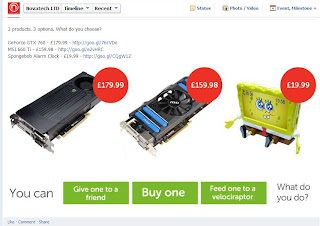(I wrote this for my company's blog in October 2013)
Building our own PCs is more important than ever, but it’s not the only thing we do. It’s just the start.
In the current edition of Computing Magazine there’s a remarkable cover story; “Keeping the PC in UK plc.”, that not only features a very British bulldog on a Novatech Ultrabook, but also a background of our production engineers building PCs and laptops. We’re understandably delighted.

The article’s theme is stated bluntly in the first sentence, “Who would choose to manufacture in the UK, let alone products in a market as competitive as PCs, with its razor-thin margins, and peaks and troughs of demand to contend with? How on Earth do they stay in business?”
The answer to the first question is, it turns out, pretty simple – us. And we are doing far better than just staying in business; we’re growing every year. The answer to the second part of the question is almost as simple – by supplying organisations that value what we do best, i.e. great products coupled with expert advice and exceptional support.
The article explains that, ‘The unique selling point for them (Novatech) is that by manufacturing in the UK, it can build custom PCs for SMBs faster than a company shipping in finished goods from Eastern Europe or Asia, while providing a higher degree of customisation and service. “We can build for purpose and for price, and have it delivered inside a week and support it.”’
Put our way, we are proud to say that, “this computer has our fingerprints all over it.”
This is not the kind of statement you might expect from a technology company, but we’re not talking about smears on the screen. We’re talking about our care and attention. A human, in a factory in Hampshire, has handled this device; checked it; configured it; loaded software onto it; carefully boxed it up and sent it off. It has passed our stringent tests – both digital and visual – and is ready to carry our name.
At Novatech we sell thousands of brands from Apples and Samsungs to Toshibas and even Dells. In fact we’ll provide you with the best technology whatever the brand, as long as it’s what works best for you, the customer. One of the main reasons we still favour building our own hardware, however, is to give the very best support, because we believe that buying a product is just the start. If we build it, we know it inside out and we can support it better than anyone else. We are growing because of this philosophy and that’s why our customers look to us first.
Every system we build – from the simplest PC to our most complex server arrays – has been through a very human process to ensure that it will do the job it’s intend for and that it will give the user true worry free computing. We believe that no large international brand can get close to matching the level of integration between production, support and customer service that we offer. Have we ever mentioned the fact that the readers of Which? voted our PCs second only to Apple for reliability and support? No? Well that integration is why the fussiest people in the country rate us so highly.
Last week RM, one of the UK’s largest and oldest PC manufacturers announced that it was to cease building PCsand laptops in the UK to concentrate on software and services. This was not a huge surprise to us, but not because you can’t grow and make great technology here in Britain. We believe that one of their main problems was a failure to look after their customers after they’d bought the hardware. Their support was often outsourced; they lost the link between maker and user and as a result they lost their customers’ trust quite some time ago.
This is not about flag waving and we don’t use a Union flag on our machines, but this is very definitely about pride in making amazing machines. We’re proud that we build them here on the South coast and we’re proud that we build things that work well and we’re proud that with our expertise and our own great support, they’re built to last.
To read the full article on-line click here. Or the Novatech blog is here.











